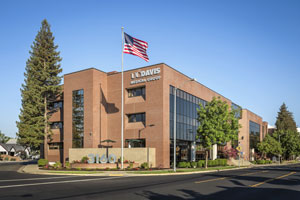Traumatic Brain Injury
Research Program
UC Davis has been a leader in Traumatic Brain Injury Research for over 20 years. Our mission is truly collaborative, combining the expertise of our basic and clinical scientists to evaluate how injury alters brain function and behavior not just in laboratory models, but also at the bedside, and to leverage our findings to develop innovative therapeutic strategies to improve quality of life in our patients with TBI.
The UC Davis Traumatic Brain Injury Research Program has three active lines of research spanning from the bench to the bedside. The laboratory has recently developed a new model of repeat mild head injury in the adolescent rat. The long-term goal of this project is to see how injury alters brain function, and whether we can identify relevant biological markers that can help our clinical team evaluate when an individual is ready to return to work or return to play.
Over the last 10 years we have established our laboratory as a world’s leader in the evaluation of changes in deep brain electrical activity following TBI and how changes in neural oscillations related to cognitive outcome following injury. We have also leveraged these findings to develop an innovative neuromodulation program, using theta frequency stimulation to improve outcome in rats following TBI.
One of the challenges is that many of our patients subsequently develop post-traumatic epilepsy in the years following a traumatic brain injury. Our clinical team has developed a program to evaluate which changes in anatomy and neural connectivity best predict which patients are most vulnerable to developing epilepsy. Identifying patients early and characterizing which mechanisms are related to the development of seizures are the critical first steps in the development of new treatments to prevent or lower the incidence of post-traumatic epilepsy. Our clinical team is also involved in several clinical trials designed to identify best practices in treating patients with TBI, especially TBI with polytrauma and burn injuries, as well as the use of brain oxygenation to guide treatment while in the hospital.
Our Research Team
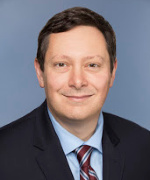 |
Gene Gurkoff, Ph.D. Associate Professor of Neurological Surgery Director Traumatic Brain Injury Lab |
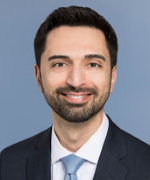 |
Kia Shahlaie, M.D., Ph.D., F.A.A.N.S. Professor of Neurological Surgery and Neurology Director, Bronte Neuromodulation |
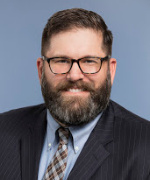 |
Ryan Martin, M.D. Assistant Professor Neurological Surgery and Neurology |
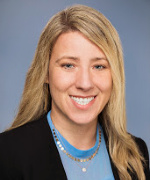 |
Lara Zimmerman, M.D. Assistant Professor Neurological Surgery and Neurology |
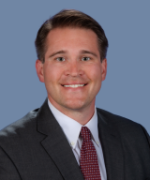 |
Jeffrey Vitt, M.D. |
 |
Marike Zwienenberg, M.D. Associate Professor of Neurological Surgery |
 |
Ali Izadi, Ph.D. Postdoctoral Fellow Trainee, Bronte Neuromodulation Research Program |
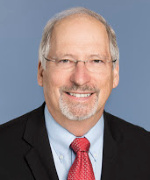 |
Robert Berman, Ph.D. Emeritus Professor |
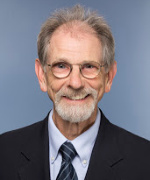 |
Bruce Lyeth, Ph.D. Emeritus Professor |
Ongoing Projects
Pre-Clinical / Translational Research
Theta Frequency Stimulation of the Medial Septal Nucleus in Traumatic Brain Injury
Investigators: Gene Gurkoff, PhD, Kia Shahlaie, M.D., Ph.D.
Imaging of Glial Activation and Risk for Posttraumatic Epilepsy
Investigators: Ryan Martin, M.D., Lara Zimmerman, M.D., Jeffrey Vitt, M.D., Gene Gurkoff, PhD,
EpiBioS4Rx – Developing Antiepileptogenic Therapies Following Traumatic Brain Injury
Investigators: Ryan Martin, M.D., Lara Zimmerman, M.D., Jeffrey Vitt, M.D.
BOOST3 - Brain Oxygen Optimization in Severe TBI Phase-3
Investigators: Ryan Martin, M.D., Lara Zimmermann, M.D., Jeffrey Vitt, M.D., Kia Shahlaie, M.D., Ph.D.
Funding
Active
GRANT12727305 (PI: Martin) Jul. 1, 2019 - Jun. 30, 2022
Imaging of Glial Activation and Risk for Posttraumatic Epilepsy
DoD, CDMRP
Recently Completed
1R01NS084026 (PI: Gurkoff) Feb. 1, 2014 - Jan. 31, 2022
Restoring Connectivity Following Traumatic Brain Injury
NIH, NINDS
Select Publications
Martin R, Taylor S, Palmieri TL. Mortality following combined burn and traumatic brain injuries: An analysis of the national trauma data bank of the American College of Surgeons. Burns. 2020 Jul 3.
Garza N, Toussi A, Wilson M, Shahlaie K, Martin R. The Increasing Age of TBI Patients at a Single Level 1 Trauma Center and the Discordance Between GCS and CT Rotterdam Scores in the Elderly. Front Neurol. 2020;11:112.
Ondek K, Brevnova O, Jimenez-Ornelas C, Vergara A, Zwienenberg M, Gurkoff GG. A new model of repeat mTBI in adolescent rats. Experimental Neurology 331; 113360-113381, 2020 Sep;331:113360.
Greenan K, Taylor SL, Fulkerson D, Shahlaie K, Gerndt C, Krueger EM, Zwienenberg M. Selection of children with ultra-severe traumatic brain injury for neurosurgical intervention. J Neurosurg Pediatr. 2019 Apr 5:1-10.
Zimmermann LL, Martin RM, Girgis F. Treatment options for posttraumatic epilepsy. Current Opinions in Neurology. 2017;6:580-586.
Martin RM, Wright MJ, Lutkenhoff ES, Ellingson BM, Van Horn JD, Tubi M, Alger JR, McArthur DL, Vespa PM. Traumatic hemorrhagic brain injury: impact of location and resorption on cognitive outcome. J Neurosurg. 2017 Mar;126(3):796-804.
Pevzner A, Izadi A, Lee DJ, Shahlaie K, Gurkoff GG. Making Waves in the Brain: What Are Oscillations, and Why Modulating Them Makes Sense for Brain Injury (Review). Front Syst Neurosci. 2016.
Kolarik BS, Shahlaie K, Hassan A, Borders AA, Kaufman KC, Gurkoff GG, Yonelinas AP, Ekstrom AD. Impairments in precision, rather than spatial strategy, characterize performance on the virtual Morris Water Maze; A case study. Neuropsychologia 80; 90-101, 2015.
Lee DJ, Gurkoff GG, Izadi A, Echeverri A, Melnik M, Berman RF, Ekstrom AD, Muizelaar JP, Lyeth BG, Shahlaie K. Septohippocampal neuromodulation improves cognition after traumatic brain injury. J Neurotrauma 32(22); 1822-1832, 2015.
Gurkoff GG, Shahlaie K, Lyeth BG, Berman RF. Voltage-Gated Calcium Channel Antagonists and Traumatic Brain Injury (Review). Pharmaceuticals 6(7); 788-812, 2013.
Gurkoff GG, Feng JF, Van KC, Izadi A, Ghiasvand RT, Shahlaie K, Song M, Lowe DA, Zhou J, Lyeth BG. NAAG peptidase inhibitor improves motor function and reduces cognitive dysfunction in a model of TBI with secondary hypoxia. Brain Res 1515; 98-107, 2013.
Watrous AJ, Lee DJ, Izadi A, Gurkoff GG, Shahlaie K, Ekstrom AD. A comparative study of human and rat hippocampal low frequency oscillations during spatial navigation. Hippocampus 23(8); 656-661, 2013.

